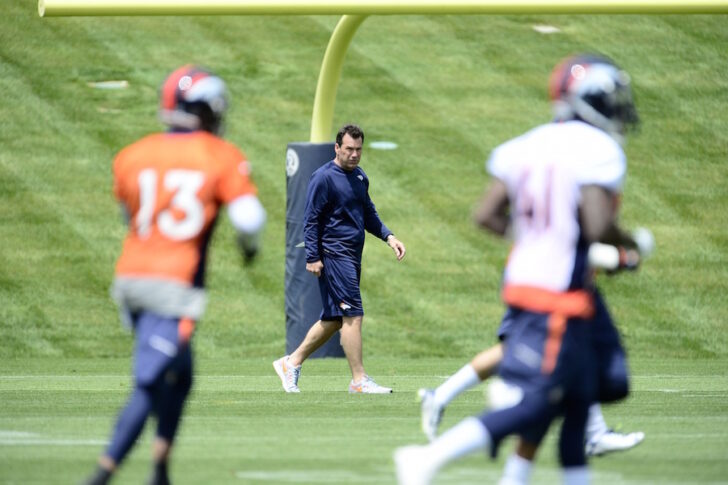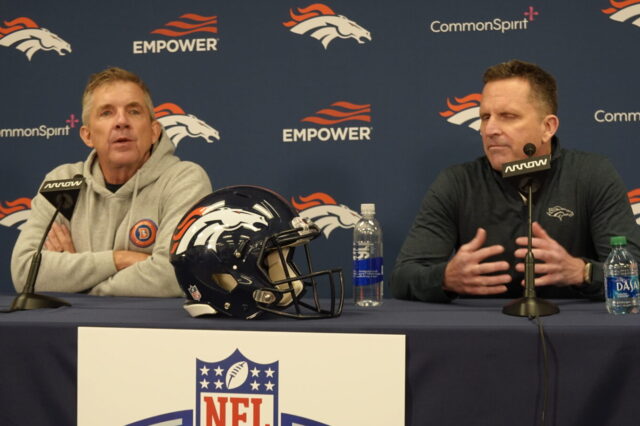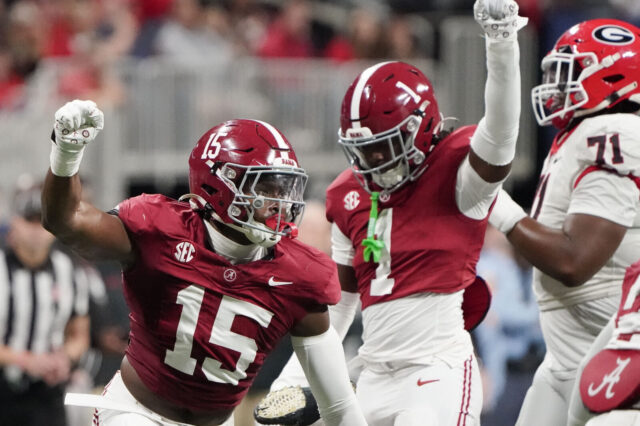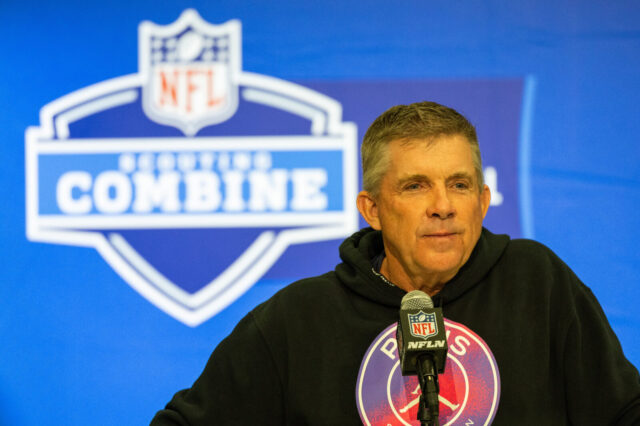On Tuesday, the Broncos will gather at Dove Valley for their latest round of organized team activities (OTAs). As a result, the local media will flock to cover every detail, providing moment-by-moment coverage of everything that is happening.
Given that people would tune in to watch an NFL football get stitched and stuffed, this isn’t surprising; the public can’t get enough of the new national pastime. But that doesn’t mean it’s not a total exercise in futility.
In almost every way, shape and form, OTAs are a total waste of time. If they were important, Von Miller would be there and Mark Sanchez wouldn’t be sitting out with an injury to his non-throwing thumb; star players and quarterback participate when something is significant.
People will argue that these sessions are invaluable; they’ll contend that they are vital for a team as they prepare for the upcoming season. Given that there isn’t a non-OTA team to use as a counterargument, it’s an impossible theory to prove either way. But one question does help provide a glimpse of how crucial these offseason practices truly are for a team.
How did the Broncos look in last year’s OTAs?
Most likely, nobody remembers. It was a year ago, no one was keeping stats or score, and hardly anyone was actually paying attention. They could have been crisp, sharp and flawless. Or they could have been messy, sloppy and mistake prone. Nobody knows.
And either outcome could have been a good thing. If last year’s team was ready to go in May, then that’s the standard for what eventually leads to a Super Bowl winner. If they were far from a finished product, then it is evidence that things can improve as the season goes along.
Given the history of the league, where teams develop throughout the year and need to blossom at the right time, it’s most likely that neither option is the wining answer. In reality, coaches and players are going to have to improvise, adapt and make decisions on the fly next fall; what they do now, with players who may not even be at their disposal in September, October, November and December, is essentially meaningless.
Which brings up the real answer to the question. The only notable thing that happened during the Broncos OTAs last season was that they lost two key contributors for the season.
First, Jeff Heuerman was injured during a non-contact drill in early May. The team’s third-round selection, who was expected to contribute at tight end as a rookie, tore his ACL during a special teams drill; he’s still yet to play a down for the Broncos.
Three weeks later, Ryan Clady shelled his knee during a meaningless offseason practice. On an offensive line that was already going to be makeshift, losing an All-Pro caliber left tackle was devastating; in reality, the Broncos offense never recovered from the injury, struggling all season long to protect the quarterback and open up holes in the running game.
And it’s not just the Broncos who have suffered these kinds of fates during OTAs. It’s a league-wide problem, with the Jaguars serving as the best example of OTAs gone awry.
Last year, Dante Fowler missed the entire season after blowing out his knee during the team’s first offseason practice; given that he was the third-overall pick in the draft, that’s a huge blow. Fast forward 12 months, and it was déjà vu in Jacksonville, as the fifth pick in this year’s draft, Jalen Ramsey, was hurt during a May practice; the extent of his knee injury is still being determined.
The rough-and-tumble crowd will contend that teams can’t place players in a bubble; after all, they could get hurt crossing the street. But that’s a worn-out, tired and semi-Neanderthal viewpoint; it’s an old-school, rub-some-dirt-on-it approach that harkens back to a bygone era when people didn’t know any better.
Nowadays, that excuse doesn’t exist. There is clear evidence that with every time a football player steps onto the field, the chance for injury increases. So the smart approach, at least one that applies the use of things like math and logic, would be to limit those instances; teams should only put their players, all of which are valuable assets, in harm’s way when there is something on the line.
In Miami, new head coach Adam Gase understands this; he’s spending a lot more time in the classroom than on the field during OTAs, a move that is a break from tradition. And if he finds success, people are sure to mimic his tactics; the NFL is a copycat league, so Gase could start new trends if the Dolphins become a winner.
But the Broncos shouldn’t wait for those results; there’s no need to be a follower on this front. Instead, the team that is the best in the NFL, and has a roster that has a legitimate shot to win it again in 2016, should be a leader when it comes to offseason programs.
Get the players off the field. Instead, focus on the classroom, film study, conditioning and other things that are less likely to lead to injury. Develop skills that will come into play in January, including teamwork and camaraderie, instead of July and August.
That would be the best possible news that could emerge from Dove Valley this week. And it would actually have some substance behind it.
“How did Paxton Lynch look, Coach Kubiak?”
“He was great at the chalkboard; nobody knew the right calls better than he did.”
That’s a Q&A worth paying attention to in May. Anything else is just a bunch of hooey put forth by the media to fill airtime and column inches.



